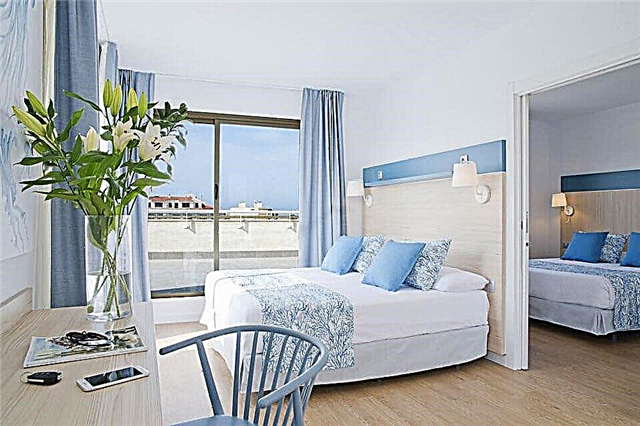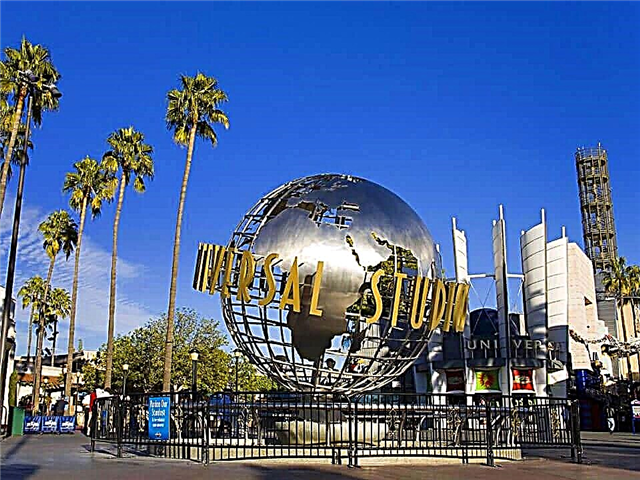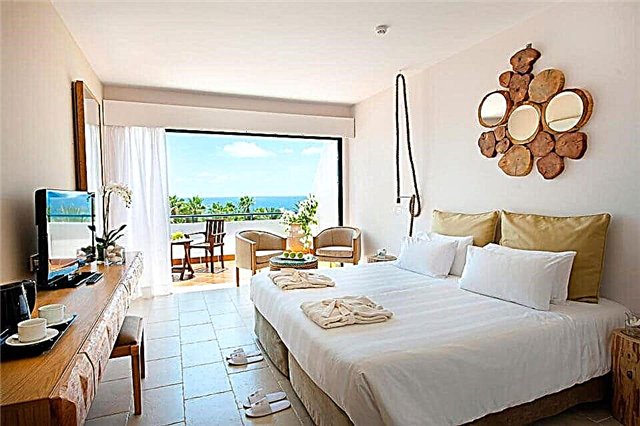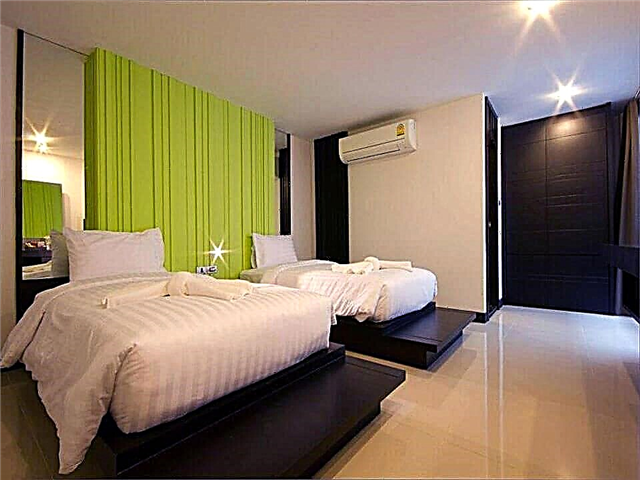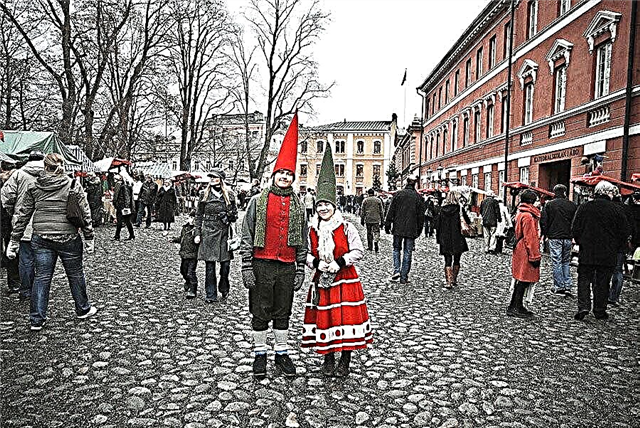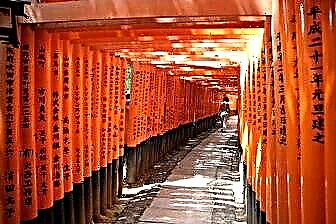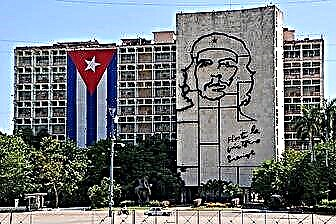The history of the capital of Cuba is more than 500 years old. During this time, the city acquired a unique and distinctive look and flavor. The area of Old Havana is listed by UNESCO as a heritage of mankind. The number of architectural monuments per unit area is simply off scale. Among them are ancient defensive fortresses, ancient squares with colonial buildings, the Cathedral of St. Christopher, the majestic Capitol, the Malecon embankment, etc.
Havana also has a vibrant entertainment program. Every night is filled with Caribbean rhythms and the fun of nightclubs and cabarets. Colorful festivals, carnival processions with incendiary dances, music, luxurious outfits and a sea of positive emotions are regularly held in the city. In addition, there are 20 km of excellent beaches, water activities, and notable fishing for recreation.

The best hotels and hotels at affordable prices.
from 500 rubles / day
What to see and where to go in Havana?
The most interesting and beautiful places for walking. Photos and a short description.
Capitol
The grandiose government building in the Renaissance style was opened in 1929. It is larger than a similar building in Washington. Since 1960, it has been home to one of the Cuban ministries, a history museum, and a scientific and technical library. A magnificent staircase leads to the main entrance with two 6-meter sculptures on the sides. Massive bronze doors are decorated with bas-reliefs on the history of Cuba. Under the dome in the floor of the Capitol, there is a zero kilometer mark.

Malecon embankment
It was built at the beginning of the 20th century to protect urban structures from erosion by water. The length is 7 km. It covers 14 quarters with modern and old buildings, many monuments to national heroes and historical events. The venue for the annual Havana Carnival. UNESCO promotes the restoration of historic buildings - they acquire brightly colored facades. Many shops, restaurants, hotels. The tallest building in the capital, a 24-storey hospital, was built here.

Revolution square
It began to be built during the reign of Batista and was called the Civil or the Republic. After the Cuban Revolution in the late 50s, it was renamed, and became the venue for all meetings and demonstrations. The largest square in the capital can accommodate up to 1.5 million people. Highlights include the Jose Marti marble memorial with the tallest tower in the city. And also a huge portrait of Che Guevara, fixed on the facade of the Interior Ministry building.

José Martí Memorial
Opened in 1958 on Revolution Square. Consists of a 109-meter tower, five-pointed in cross section, and an 18-meter statue of a Cuban poet and revolutionary. The pedestal near the monument is used as a tribune during meetings and celebrations. At the top of the tower is an observation deck, the highest in Havana. Inside there is a museum, the exhibits of which are associated with the creativity and political activities of the national hero, as well as with the history of Revolution Square.

Plaza de Armas
The oldest square in Havana, the Armory, was laid by the Spaniards in 1519 for ceremonial events and military drills. It acquired its modern look in the 18th century. Notable buildings include the El Tempo Chapel, the Palace of Captain Generals, the 5-star Santa Isabel Hotel in an 18th century palace. In the center - the monument to Carlos Manuel de Sespendes. There is a famous book market on the square, where they sell old magazines, books and paintings, small souvenirs.

Plaza Vieja
Having appeared in 1559, the Old Square managed to visit a place of rest, a shopping center, a territory for executions, processions, and bullfights. It acquired its modern look in the 18th century, when arcades were built around the perimeter. Different styles from Baroque to Modernism are intertwined in the architecture of buildings. It houses the Photo Library, the Art Gallery, and the Visual Arts Center. Lots of bars and cafes. In the center is the 1796 fountain. Musicians play every evening.

Boulevard Prado
The main walking area of Havana, with shady trees, lanterns, lion sculptures and marble benches. Length - 2 km. It starts from Central Park and stretches to the embankment. The history dates back to the 18th century. However, it acquired its current appearance after reconstruction in 1929. Along the street are the Capitol, the House of Science, the Bolshoi Theater, the Moorish House, the Wedding Palace, hotels and other buildings. Near the Floridita bar there is a monument to Hemingway.

Grand Theater of Havana
Leads its history since 1838. Although it acquired its current appearance in the Baroque style in 1915. One of the most beautiful buildings in Havana. Its façade and interiors are decorated with statues by the Italian master Moretti. It has several concert and rehearsal halls, many galleries, and a choir center. The main hall of García Lorca has 1,500 seats. Home stage of the national ballet. Venue for festivals of ballet, jazz, Caribbean culture, theater, etc.

Museum of the Revolution
It was founded in 1959. Located in the building of the former Presidential Palace. Consists of 30 halls, in which about 9 thousand exhibits are presented. The museum exhibits reflect the history of the struggle of the Cuban people for their independence, from the colonial takeover of the island by the Spaniards and ending with the events of the Cuban Revolution, as well as the period after 1959. Some of the exhibits are located in the park behind the museum. These are samples of equipment that took part in military events.

National Museum of Fine Arts
It was created in 1913. The largest art museum in the country. Its expositions are located in 2 buildings. The Palais des Beaux-Arts contains a collection of works by Cuban artists dating back to the 18th century. All schools and trends are represented, more than 1200 paintings, sculptures and prints. The Asturias Center displays paintings by European and American painters. Particular attention is paid to the Flemish and Spanish artists of the 19th century. The art of the ancient world is also presented.

F.A.C
Gallery of modern art on the territory of the former plant for the production of vegetable oil. It opened in 2014. The most fashionable place in Havana, where the creative life is in full swing around the clock. Samples of contemporary painting and literature, photography and sculpture are presented. Live music sounds, parties, shows, buffets, enchanting performances are regularly held. There are many bars with a large selection of cocktails at affordable prices. On the roof there is a restaurant with original cuisine.

Napoleonic Museum
The basis for the creation of the museum was the collection of the Cuban magnate Julio Lobo, a great admirer of Napoleon. Today, the museum funds contain about 8 thousand exhibits, the main of which is a death mask taken by the personal doctor of the French emperor. There are also furniture, weapons, clothes of the Bonaparte era, his personal belongings, sculptures and paintings, a library of 5 thousand volumes in different languages. The expositions are located in a 4-storey old mansion.

Ernest Hemingway House Museum
Finca la Vigia, an estate in the southeast of Havana, was donated to the government by Hemingway's wife after his death. The writer spent 20 years here. The house is located on a hill by the sea. Inside, the atmosphere is recreated that was during the life of the master. His fishing and hunting trophies, weapons, photographs are hung on the walls, dishes are placed in the dining room, 9 thousand books are kept on shelves. In the courtyard there is a boat on which Hemingway liked to go out to sea.

Rum Museum "Havana Club"
Opened in 2000 at the initiative of the company that produces the world's best-selling rum. Located in old Havana, on two floors of a historic building from the 18th century.Visitors are shown a workshop for the manufacture of barrels for aging rum, the main stages of its production. Models of Cuban factories and railways are presented. On weekends, the museum hosts Cuban bands. There is the possibility of tasting and buying the kind of rum you like.

Havana Cathedral
It began to be erected by Jesuit monks in the middle of the 18th century. After their expulsion from the country, it was gradually completed with the participation of invited Italian masters. It was consecrated in 1798. Made in baroque style from coral limestone interspersed with shells. The two side towers of the cathedral are asymmetrical. One has already been made so that when it rains, water can flow freely from the Cathedral Square. Until 1896, the remains of Columbus were buried here, then they were taken to Spain.

Church of St. Francis of Assisi
A monumental building in the Baroque style on the square of the same name. It was built in the 16th century. The 42-meter church bell tower is the tallest religious building in Havana. There is an observation deck at the top. The temple is part of a former Franciscan monastery. Today it houses a museum, where numerous historical and religious values are kept. The hall of the church has excellent acoustics; chamber music concerts are regularly held here.

Havana Christ
The 20-meter-high statue of Jesus made of snow-white Italian marble was created in 1958. Weighs 320 tons. The sculptor is Hilma Madera. The project was financed by the wife of Cuban President Batista. The majestic monument was sculpted in parts in Italy, then transported to Havana. Installed on the La Cabana hill, on a 3-meter pedestal and 50 meters above sea level. It was struck three times by lightning strikes and restored. As a result, a lightning rod was erected nearby.

La Real Fuersa
One of the oldest fortresses in America. It is located in the eastern part of the city and is better preserved than other defensive forts. It was built in the 16th century to protect the harbor from pirates. Over the next 2 centuries, it was rebuilt and strengthened several times. A tower with a weather vane in the shape of a girl was erected on one of the bastions. Since 2010, the Maritime Museum has been operating here, where you can see ship models, navigational instruments, items from sunken ships.

El Morro
The indestructible symbol of Havana is a fortress on a rocky hill. It was erected in the late 16th and early 17th centuries to protect the entrance to the harbor. The base of the fortress is 3 bastions and a 25-meter lighthouse. The fort's cannons are rusty, but the walls are perfectly preserved. All of old Havana is clearly visible from them. Today, inside the castle, there is an exhibition dedicated to Cuban lighthouses. You can get to the fortress by car or bus through an underground tunnel built under the bay.

San Carlos de la Cabana
The grandiose, largest fortress complex in the country, built in the 18th century. Its walls, 700 meters high, housed 120 cannons. In the XIX-XX centuries. the fortress served as a prison. In the 50s, during the revolution, Che Guevara's commandant's office was located here. Since the end of the last century, it has been declared a military-historical park. On the territory of the complex there is a museum of weapons and a museum of Che Guevara, several cafes, souvenir shops. By tradition, ancient cannons are fired every day at 21.00.

Havana University
Located in the prestigious Vedado area. The date of foundation is 1728. One of the leading universities in the country. Consists of 14 faculties. Today about 60 thousand students study here. The majestic university building is made in the neoclassical style, decorated with columns, frescoes, a wide staircase leads to the main entrance. In the center there is a sculpture of Alma Mater, created by one of the local artists in 1919. At one time, Fidel Castro graduated from the university.

Palace of Captain Generals
The former residence of the rulers-governors of Havana. Located in the Plaza de Armas. It was built at the end of the 18th century. The building is made in the Baroque style of coral limestone interspersed with small seashells. The decoration is elegant arcades, balconies with stained glass windows. A statue of Columbus is installed in the courtyard. Since 1968, the palace has housed the city history museum, which displays works of art and rare exhibits from the time of the Spanish colonization.

Colon cemetery
A giant open-air kingdom of white marble. Founded in 1876. On the territory of 57 hectares there are about 800 thousand burials of the most famous personalities of the country. Most of the gravestones are beautifully decorated with magnificent statues and sculptural compositions. There are mausoleums, family necropolises, even ancient Greek temples. There are streets with names, sidewalks and signs. Excursions are organized for tourists on the territory of the cemetery.

Fusterlandia
A futuristic, vibrant world of mosaic paintings, sculptures, painted items. Its creator is local artist Jose Fuster. The master painted his house and surroundings in the coastal region of Haymanitas with a rainbow of ceramics. On the walls, roofs of houses, garages, even at the bus stop, surreal creatures, faces, eyes, chess pieces are depicted here. The sight is quite impressive. Fuster's workshop sells souvenirs and some of his works.

Cabaret "Tropicana"
A bright enchanting show, about 200 highly professional musicians, dancers, acrobats and singers, luxurious costumes and makeup, a touch of eroticism, national Cuban cuisine and a sea of rum. All of this is the most popular cabaret in Cuba, which tourists from all over the world strive to get into. It was created in 1939 on the Villa Mina estate. It occupies a huge territory, immersed entirely in dense tropical thickets. Visitors at least 14 years old are accepted.



